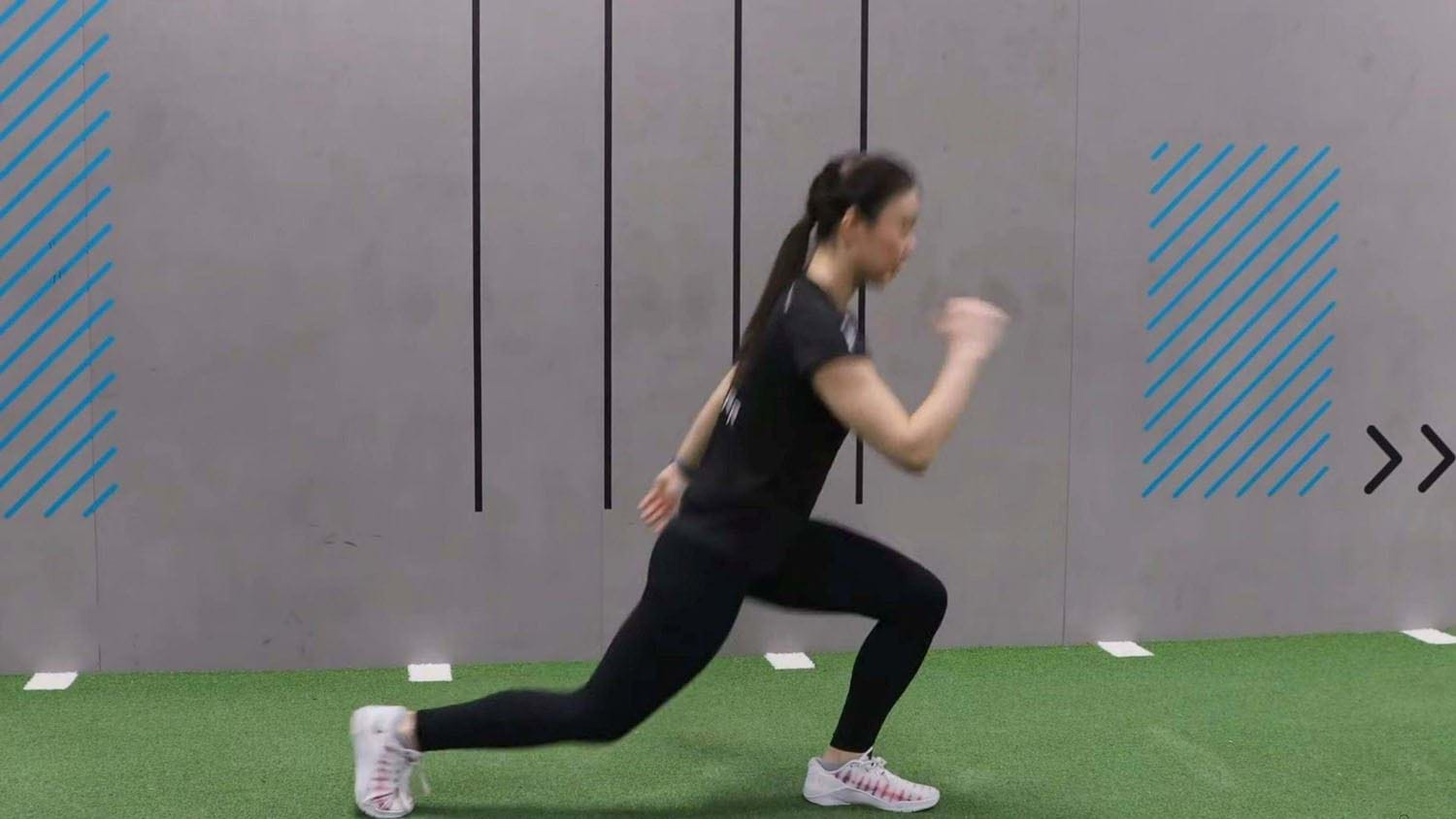Sprinter Lunges
What Is A Sprinter Lunge?

Sprinter lunges are an explosive lunge variation that increases lower body strength and power while working the cardiovascular system. It's similar to the jumping lunge, with the main difference being that one foot is always on the floor in this variation.
Sprinter lunges strengthen the quads, glutes, hamstrings, calves, hip flexors and core and help to improve balance and stability. Because of their explosive nature, sprinter lunges are also great for improving running speed and jumping power, making them particularly helpful for athletes.
Sprinter lunges are a unilateral exercise, meaning they work each side of the body separately. Unilateral exercises are great for improving muscular imbalances between each side, improving overall strength and reducing the risk of injury.
Check out our other lunge variations: jumping lunges, clock lunges, lateral lunges, curtsy lunges, walking lunges.
Commonly Asked Questions On Sprinter Lunges
Sprinter lunges help to improve lower body strength, stability and balance, power, speed, and explosiveness.
Sprinter lunges help to increase speed by strengthening the leg muscles and improving lower body drive and power.
Sprinter lunges work the quads, hamstrings, glutes, calves, and core, as well as the cardiovascular system.
Sprinter Lunge Tips
Sprinter lunges are an explosive exercise and can cause injury if performed incorrectly. We’d recommend building up strength and stability and perfecting technique with stationary lunges and walking lunges before attempting this variation.
How To Do Sprinter Lunges
Stand with feet shoulder width apart, core engaged.
Step one leg back and bend both knees so you're in a reverse lunge position with both knees at a 90 degree angle, back knee just off the floor and front thigh parallel with the ground.
Quickly drive up off the back leg and bring your foot next to the front foot.
As soon as your back leg touches the floor, jump the other leg back into a reverse lunge.
Repeat for however many reps intended.
If you’re not sure if any of the above exercises are suitable for you, please consult your doctor before you start it. Need guidance on how to perform the exercise? Ask a personal trainer at your gym.